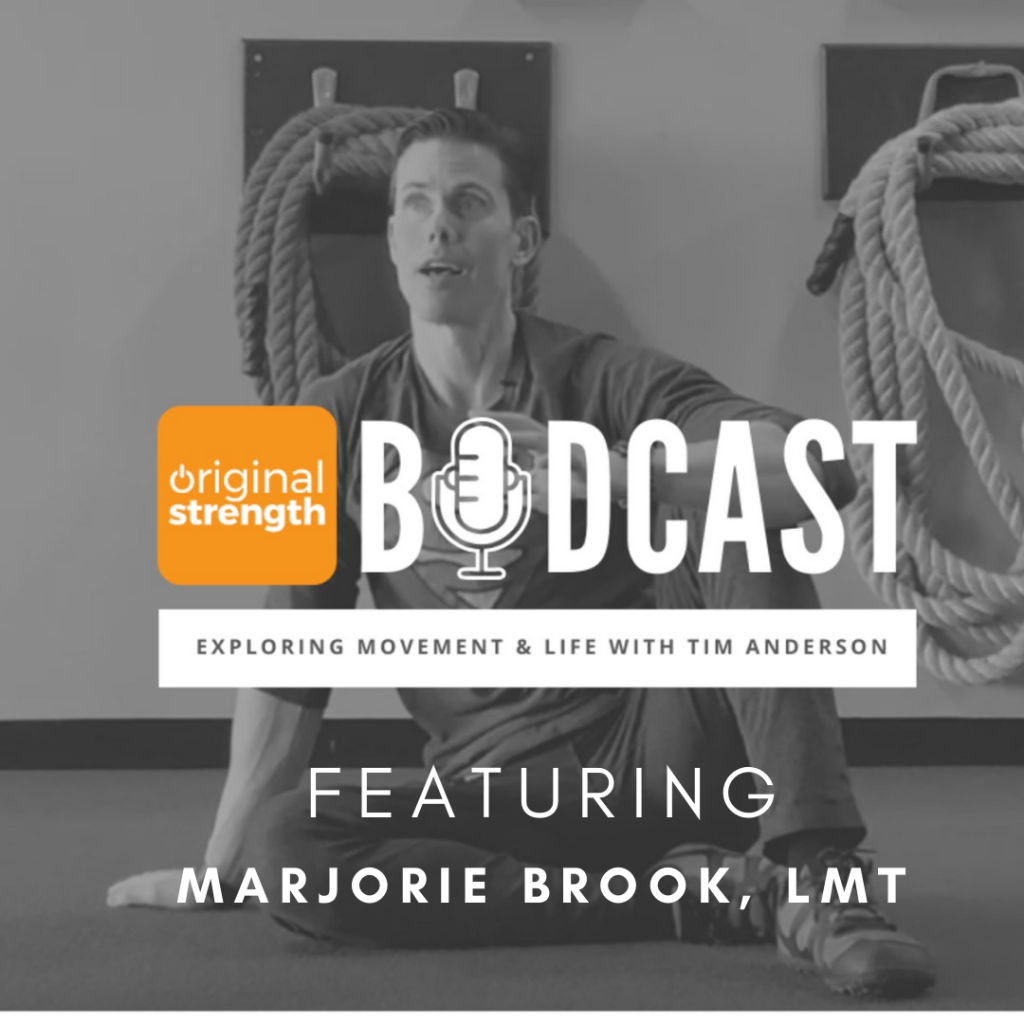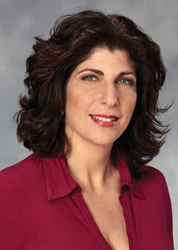Marjorie Featured on Original Strength Bodcast -The Good and The Bad of Scar Tissue
Tim Anderson speaks with Marjorie, creator of the S.T.R.A.I.T Method™ or Scar Tissue Release and Integrated Therapies, about scar tissue release. From mastectomies and c-sections to understanding the impact of past injuries to how to look at the whole picture of medical care.
(excerpts from podcast)
Tim:
Marjorie travels all over the world teaching her techniques to bodyworkers, massage therapists, and physical therapists. She’s an expert in scar tissue and today we’re talking about the good, the bad, and the ugly of scar tissue.
Marjorie you travel all over the world teaching about scar tissue release and the stretching the body and you developed the S.T.R.A.I.T Method™ so this is probably a ridiculous question to you but I thought scars were a healing process.
Marjorie:
They are. They’re a major healing process and that’s part of the problem. People really do not understand about scars. First off, other than a minor injury or lesion, every wound heals with scar tissue. It’s part of the healing process. We’re supposed to scar. But what people don’t realize about scar tissue is that it replaces the normal tissue that’s injured.
We have to scar. It’s there so the first thing I want to say about scar tissue is that anybody who says that they need to break up scar tissue or get rid of scar tissue doesn’t understand what scar tissue is.
We’re supposed to scar. It replaces the tissue that has been damaged. It’s only 70-80% as strong or as effective as normal tissue if it’s at its best state.
The problem that we have is because of this misunderstanding about scar tissue or just ignoring of scar tissue to just let the body heal, they don’t realize all the things that scar tissue can do.
Scar tissue affects every single system in our body. You know every system – not just your skin. It affects your nervous system, it can affect the organs, it can affect your circulation, it affects the lymphatic system, and the polarity. This last one is a big one.
What you want to do is let the body heal. In most places across the world, they tend to jump in and try to prevent and break-up scar tissue. Your typical rehab for a knee replacement or knee surgery is to put the patient on their belly and try to take that knee and shove it within 6 weeks or less towards the glutes. They try to force mobility. All that’s going to do is cause more tension and separate the scar and healing area because it’s over that bending surface which is going to cause it to scar more and create more scar tissue. If there’s something wrong metabolically or we do too much or too little or we do something inappropriate towards the wounded area, the scar tissue wound can reopen and then it’s got to reheal. And this builds more scar tissue. Other times the scar tissue isn’t given chance to properly heal and it’s creating more of a wound in a different direction from the tension which is then causing scar tissue to “spread”. It’s not just where you see the visible scar. It’s not where you see the visible scar or adhesions which are two separate things.
Most people consider scar and adhesions the same thing but they’re similar but they’re not the same thing. So the problem is that you’re supposed to let the body heal for the first 3 months when a scar is immature – when the body’s healing (and mind you the body produces scar tissue for up to 18 months past the original wound but after 3 months you can do more manipulation).
In the first 3 months, you can do myofascial release, lymphatic gentle range of motion, gentle stretching. The myofascial release is very, very important because you want to re-guide. It’s not just your muscles and the tissues that are being cut, the nerves are being cut. The lymphatic vessels are being cut and while the lymphatic vessels will regrow and heal in 2 weeks, where they are growing they’re getting entangled in the scar tissue unless you do the lymphatic and myofascial release to encourage it to go towards the nodes or the proper flow of what it needs and where it needs to go.
After those 3 months, as you’re gently doing range of motion and myofascial release and lymphatic, is to be a little more aggressive. That’s a relative term meaning more aggressive than lymphatic – not meaning go in and tear apart. Then you want to start working the tissue and separating the tissues where it’s getting stuck. Getting it to release and increase proper flow. Give it more range of motion and work with the body. You have to understand what the injury is doing, where the tension pulls, what the person’s metabolism is like, how their skin color impacts the keloid and scar.
There’s just so much involved that people don’t understand and they don’t understand how much scar tissue is affecting the rest of their body.
Listen to the podcast or watch the video above for the rest of Marjorie’s advice on scar tissue.

》A B O U T M A R J O R I E B R O O K
 Marjorie Brook, LMT is a massage therapist, author and international educator. For over 21 years, she has specialized in scar tissue release and massage therapy. She works from the fundamental belief that your body is intuitively aligned with the thoughts you think, the emotions that you feel and the things that you do. She founded Brooks Seminars in 2007 after working as a decade as a nationally recognized massage therapist with a private practice on Long Island. She is the creator of the Scar Tissue Release and Integrated Therapies (S.T.R.A.I.T Method™) and offers continuing education courses on this method all over the world. Her articles have appeared in magazines such as Massage Today, American Fitness and Massage World. She’s approved by the National Certification Board for Therapeutic Massage and Bodywork, the Massage Therapy Association of Alberta and the College of Massage Therapists of British Columbia.
Marjorie Brook, LMT is a massage therapist, author and international educator. For over 21 years, she has specialized in scar tissue release and massage therapy. She works from the fundamental belief that your body is intuitively aligned with the thoughts you think, the emotions that you feel and the things that you do. She founded Brooks Seminars in 2007 after working as a decade as a nationally recognized massage therapist with a private practice on Long Island. She is the creator of the Scar Tissue Release and Integrated Therapies (S.T.R.A.I.T Method™) and offers continuing education courses on this method all over the world. Her articles have appeared in magazines such as Massage Today, American Fitness and Massage World. She’s approved by the National Certification Board for Therapeutic Massage and Bodywork, the Massage Therapy Association of Alberta and the College of Massage Therapists of British Columbia.
